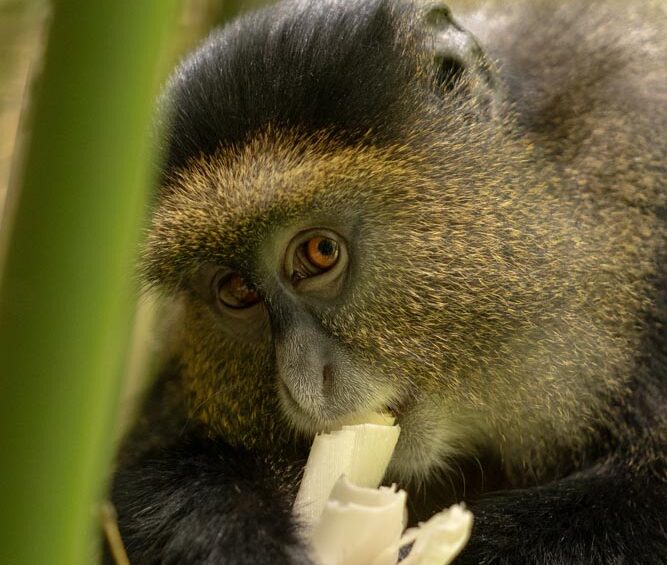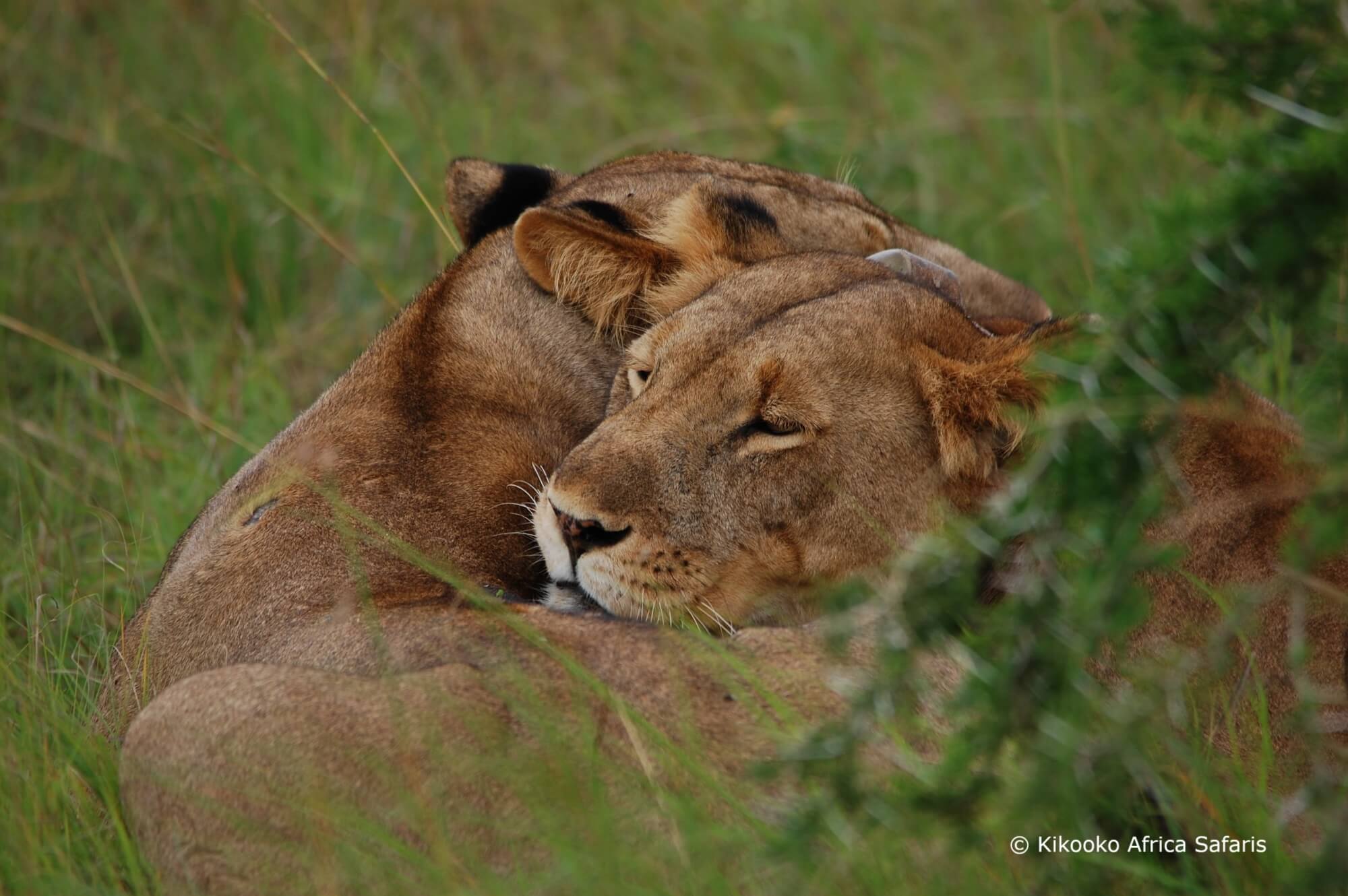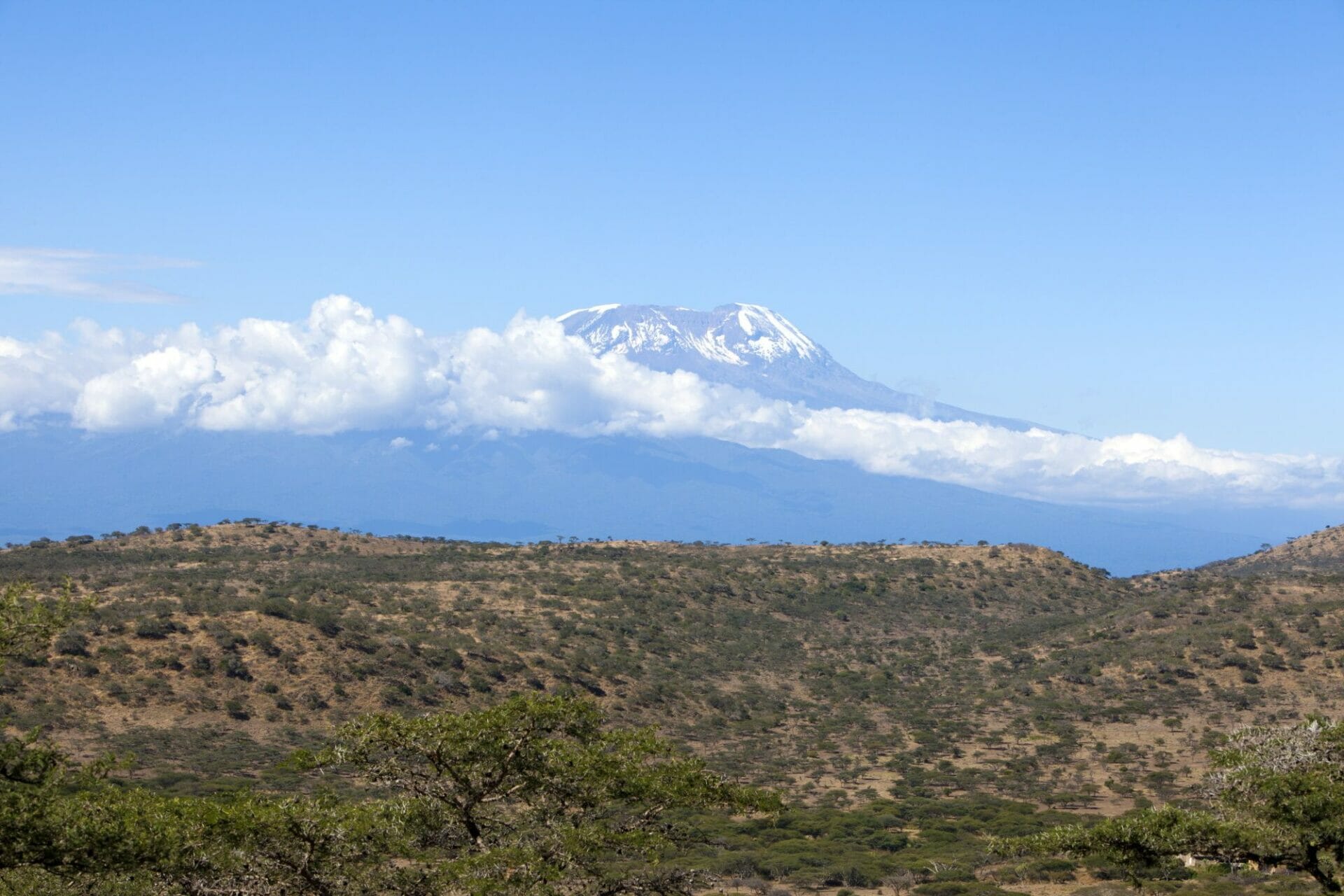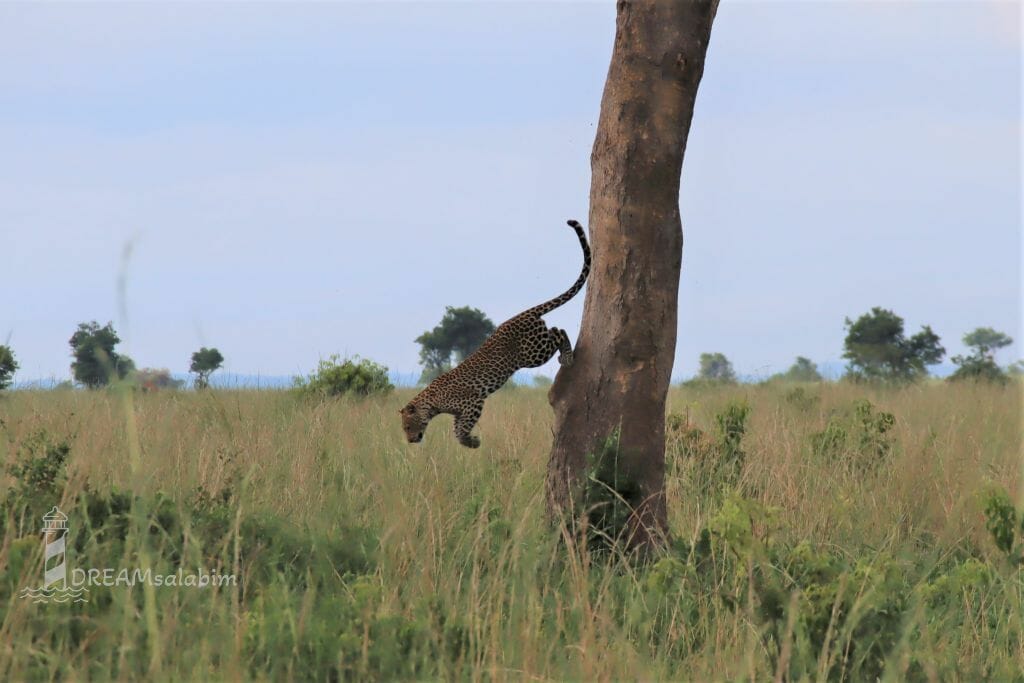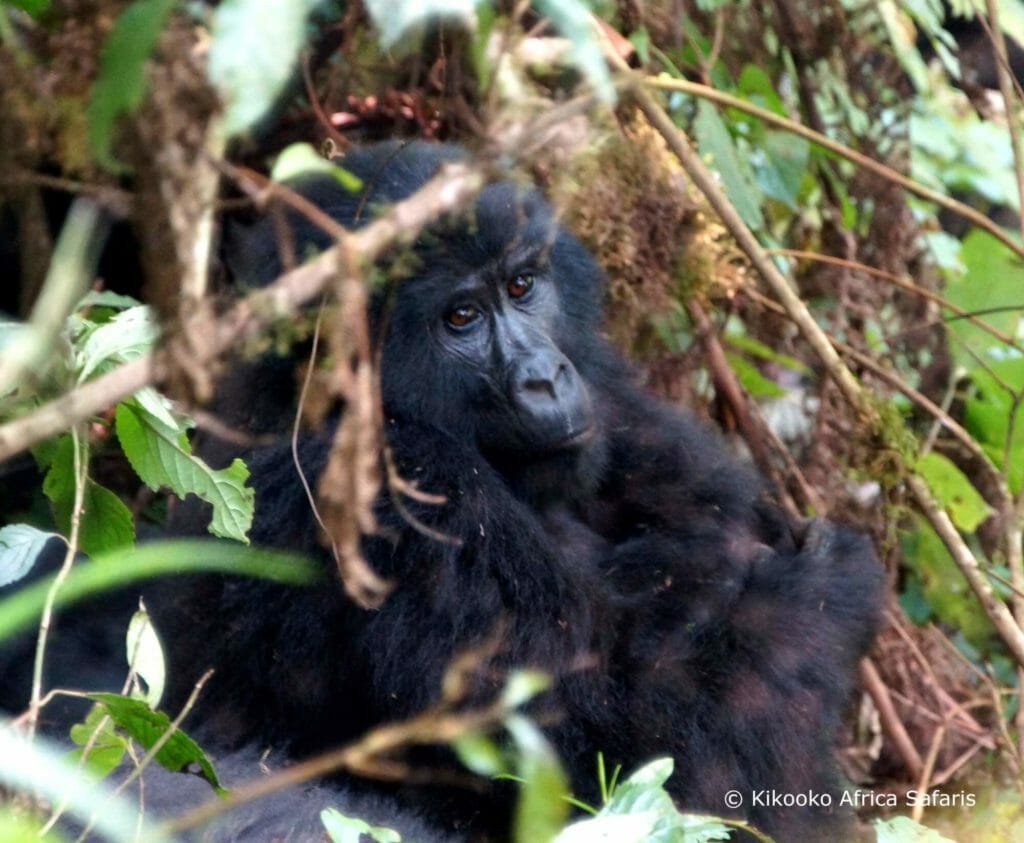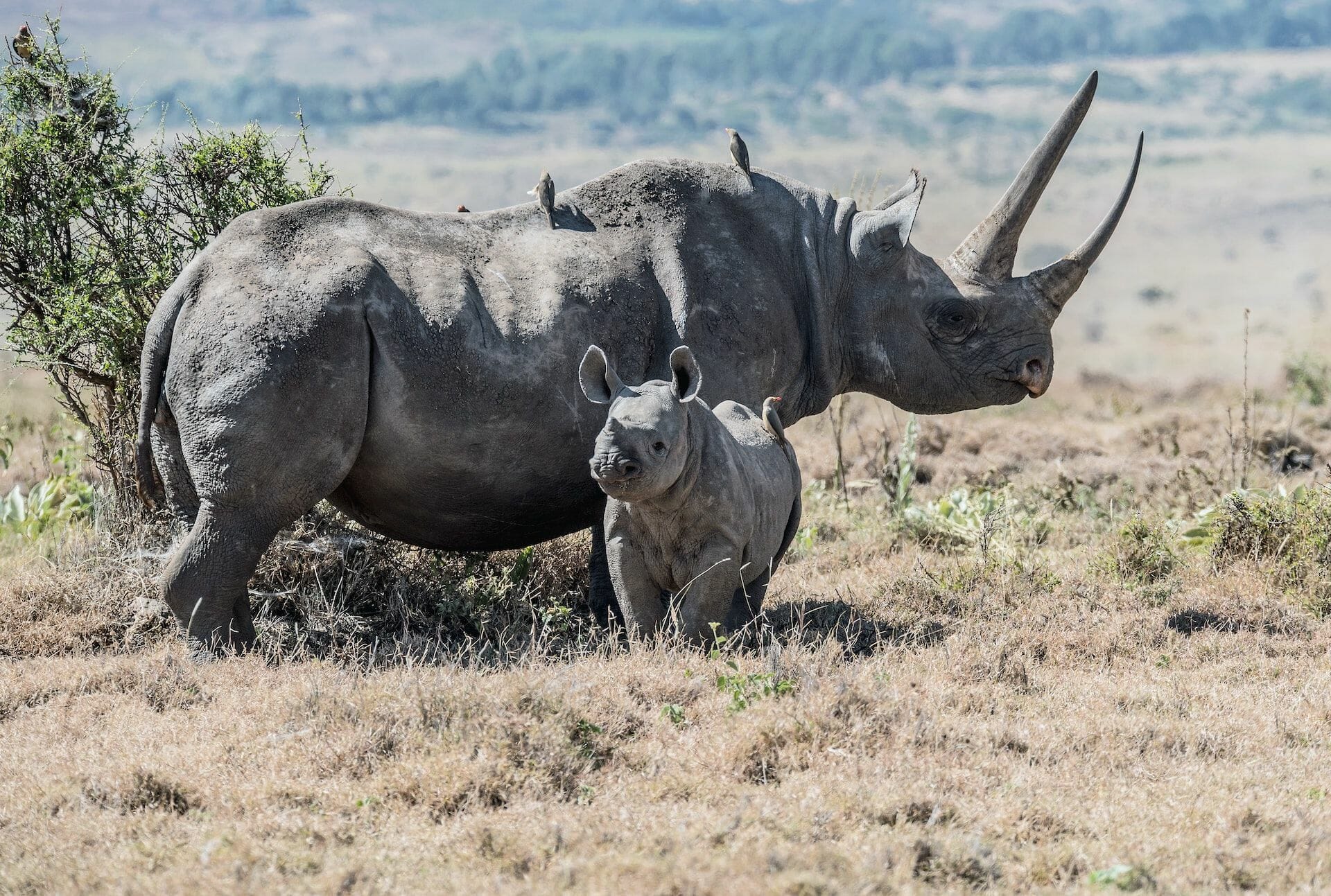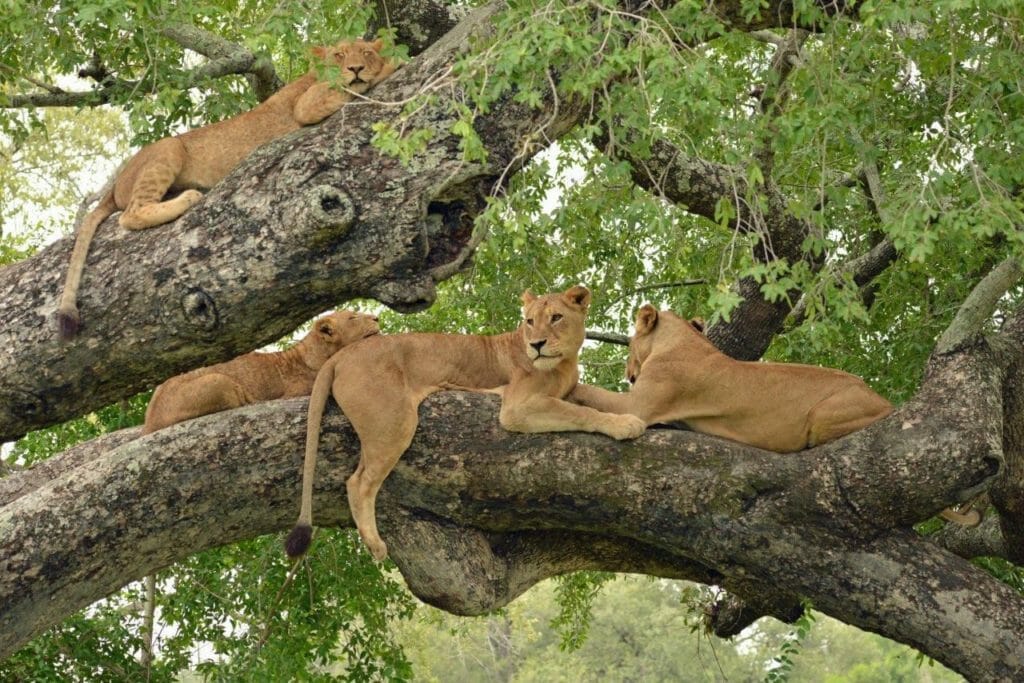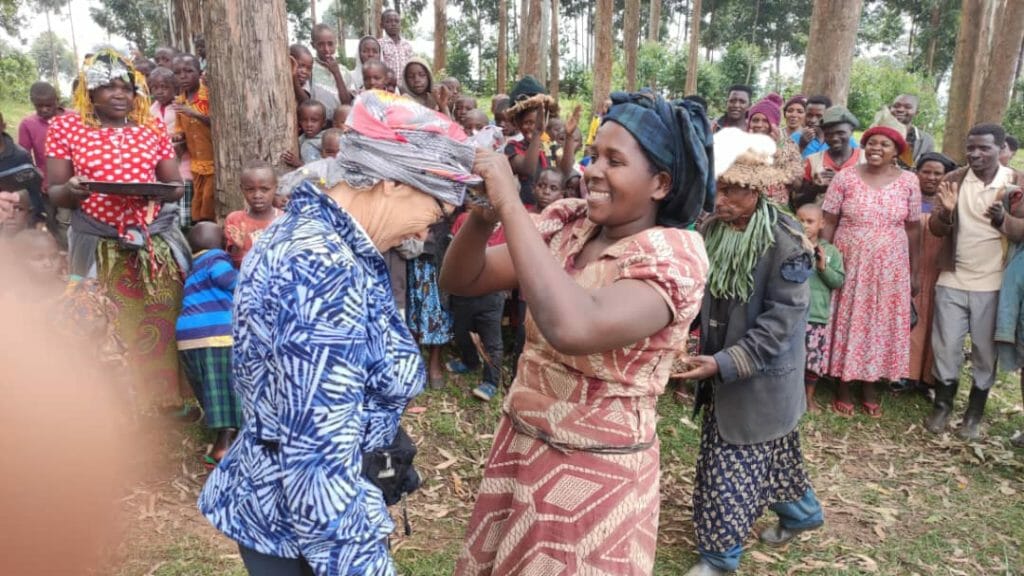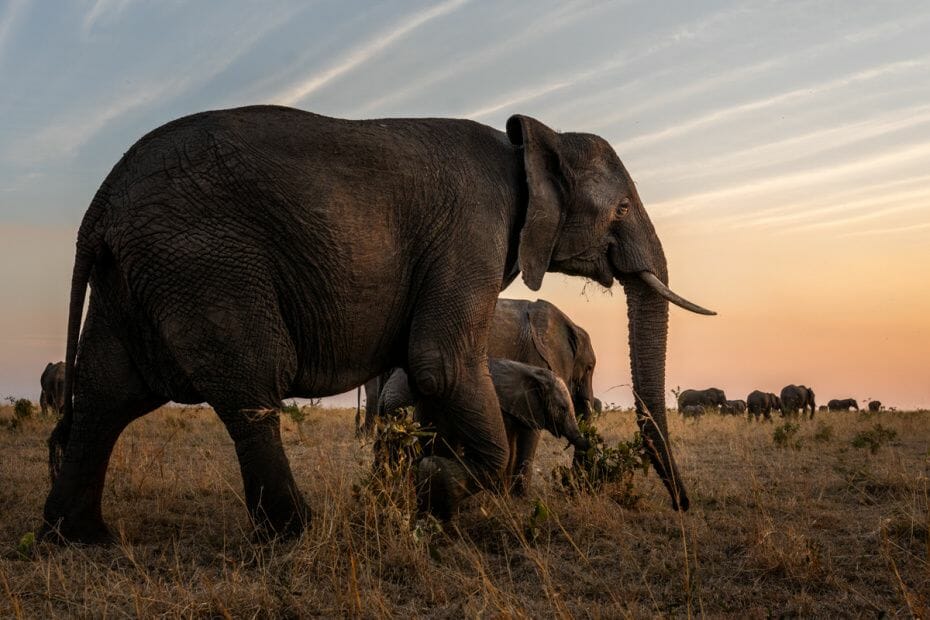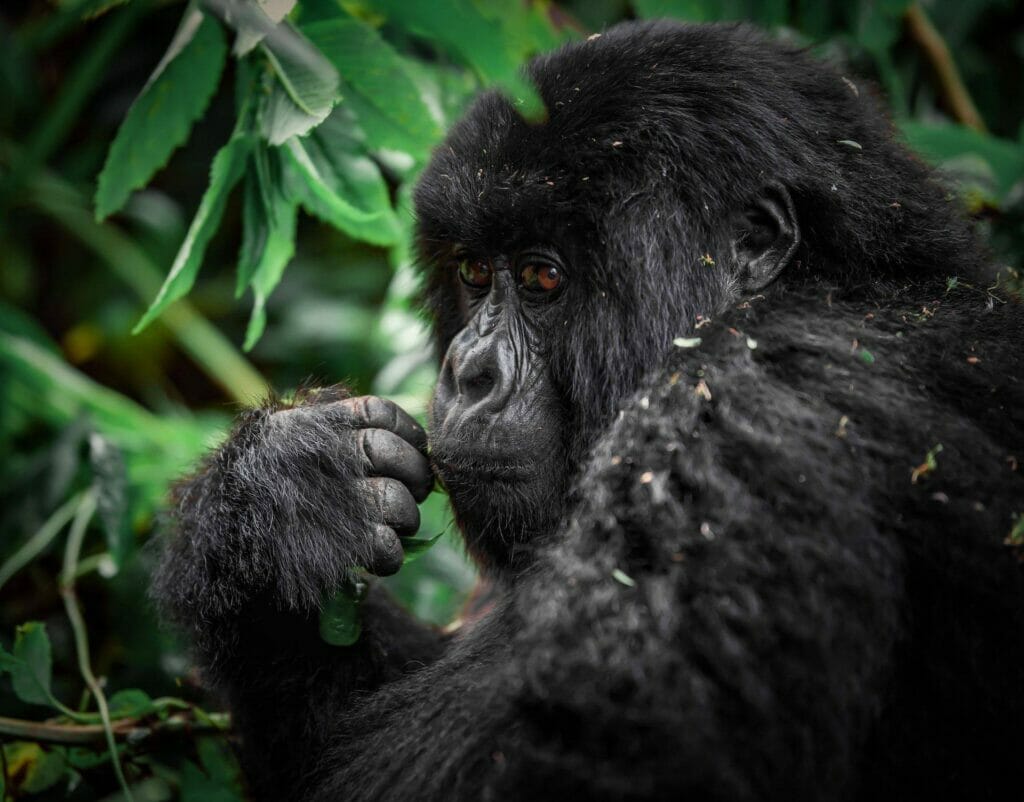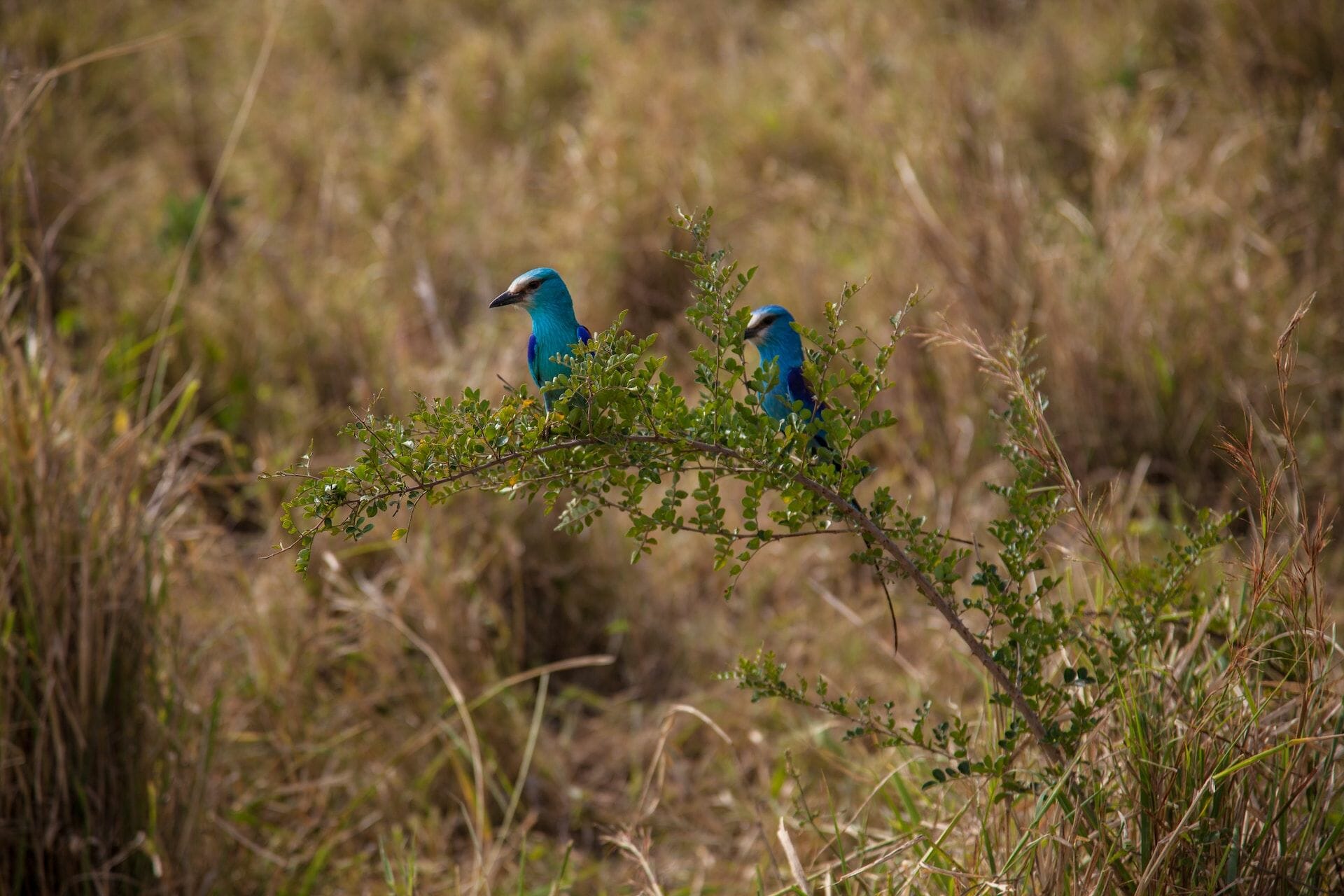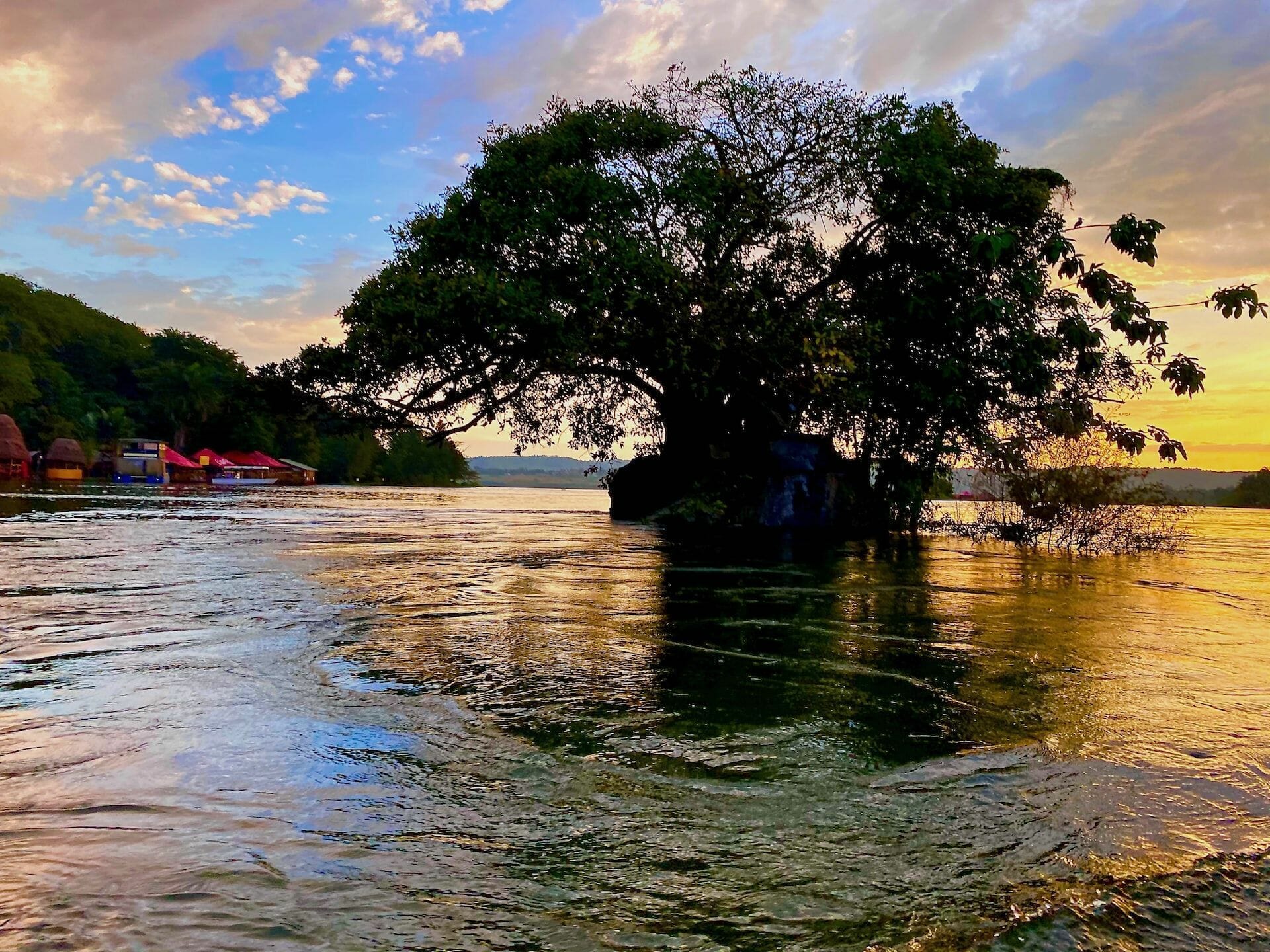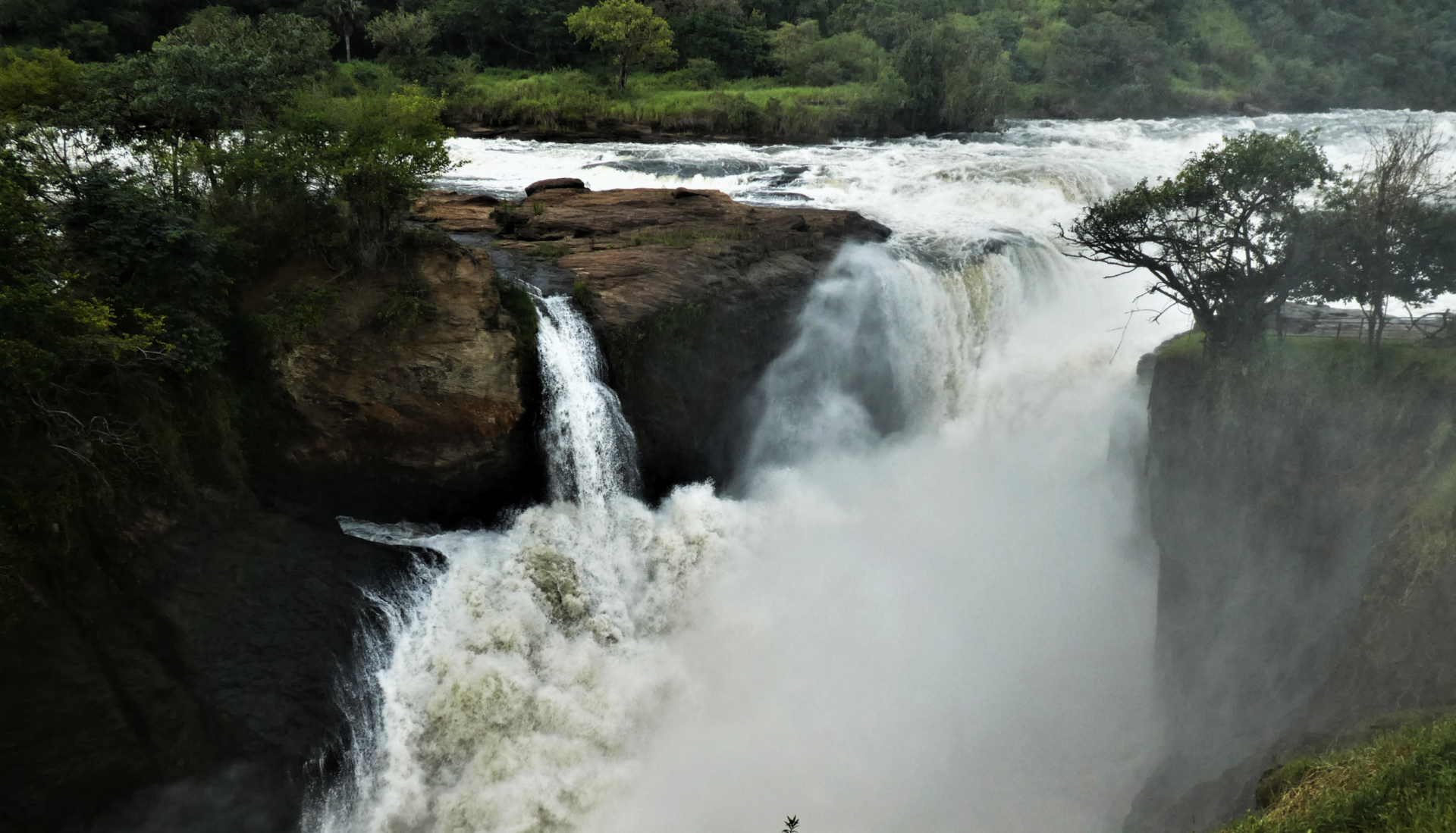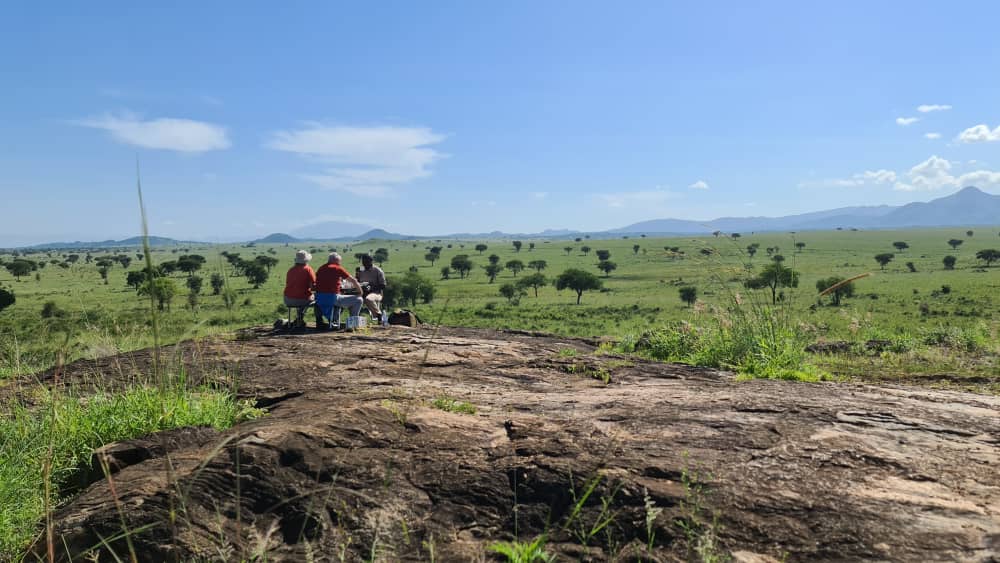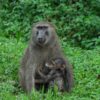Track Golden Monkeys on Safari in Uganda
Planning your golden monkey safari requires careful consideration of the best time and locations to spot these elusive creatures. Understanding the golden monkeys’ habitat is crucial, as they reside in specific areas within the national parks. Additionally, knowing the ideal seasons to visit will greatly increase your chances of encountering these fascinating creatures. We will also share our top recommendations for safari locations that offer the best golden monkey tracking experiences.
Before embarking on your safari, it is essential to be well-prepared. We will provide you with a comprehensive guide on necessary permits and documents, recommended gear and supplies, as well as health and safety precautions to ensure a smooth and enjoyable experience. By following these guidelines and tips, you will be ready to immerse yourself in the wonders of Uganda’s wildlife.
Once you are on the safari, we will delve into golden monkey tracking techniques to help you navigate their habitat effectively. Recognizing golden monkey behaviors, finding and following their trails, and practicing ethical observation practices will enable you to have a respectful and immersive encounter with these captivating creatures.
But your adventure in Uganda doesn’t have to be limited to golden monkey tracking alone. We will also introduce you to additional activities that will enhance your safari experience. From exploring Uganda’s cultural heritage to spotting other wildlife species and engaging in ecotourism opportunities, there is something for everyone to enjoy in this diverse and vibrant country.
- Introduction to Golden Monkeys and Uganda’s Biodiversity
- Best Time and Locations to Spot Golden Monkeys
- Preparing for Your Safari: Essential Guidelines and Tips
- On the Safari: Golden Monkey Tracking Techniques
- Enhancing Your Safari Experience
- Book With Kikooko Africa Safaris To Meet The Golden Monkeys in Uganda
Introduction to Golden Monkeys and Uganda’s Biodiversity
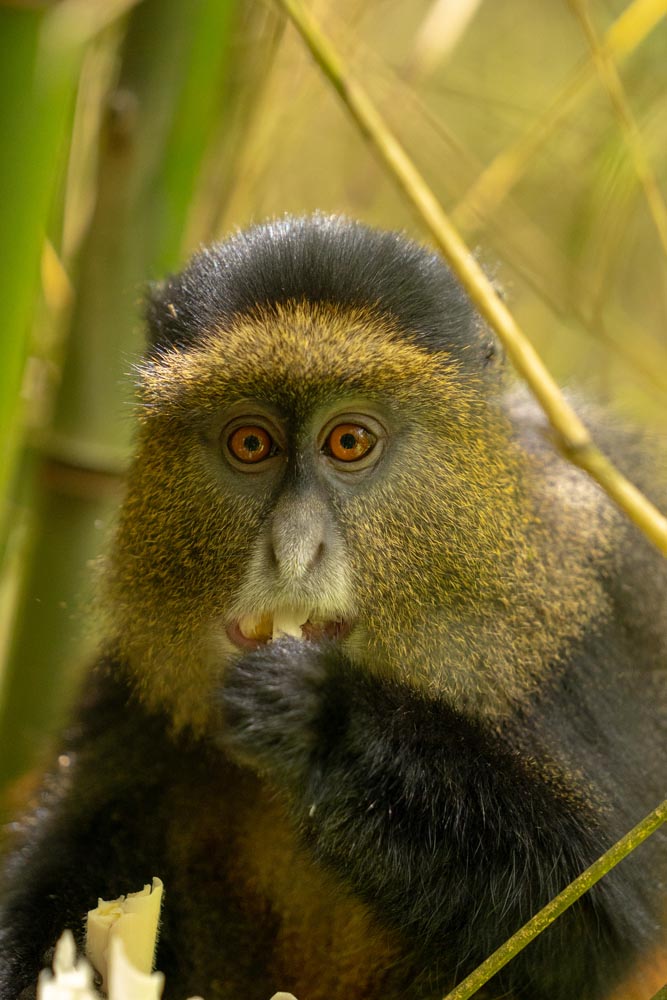
Uganda is a treasure trove of biodiversity, and among its most fascinating inhabitants are the golden monkeys. In this section, we will introduce you to these captivating creatures and provide an overview of Uganda’s remarkable biodiversity.
The Enigmatic Golden Monkeys
Golden monkeys (Cercopithecus kandti) are a species of Old World monkey known for their stunning appearance and playful nature. They are characterized by their vibrant golden-orange fur, contrasting with their black limbs, face, and tail. These monkeys are endemic to the Albertine Rift, a region in East Africa renowned for its biodiversity.
Golden monkeys are highly social animals, living in tight-knit groups called troops. Within these troops, there is a complex social structure, with dominant males leading the group. They are diurnal creatures, meaning they are primarily active during the day, and spend their time foraging for food, grooming, and engaging in social interactions.
Uganda’s Biodiversity Hotspot
Situated in the heart of Africa, Uganda boasts a diverse range of ecosystems, from lush rainforests to expansive savannahs and towering mountains. This geographical diversity has resulted in an exceptional array of plant and animal species, making Uganda a biodiversity hotspot.
The country’s national parks and protected areas serve as vital habitats for numerous wildlife species, including the golden monkeys. Uganda is home to several national parks renowned for their biodiversity, such as Mgahinga Gorilla National Park and Bwindi Impenetrable National Park, both of which are part of the larger Virunga Conservation Area.
In addition to golden monkeys, Uganda is inhabited by other iconic wildlife, including mountain gorillas, chimpanzees, elephants, lions, and a plethora of bird species. The country’s commitment to conservation has led to the establishment of protected areas and initiatives aimed at preserving its rich biodiversity.
Conservation Efforts in Uganda
Uganda is dedicated to the conservation of its natural heritage, recognizing the importance of preserving its unique ecosystems and the species that rely on them. The Uganda Wildlife Authority (UWA) plays a crucial role in managing the national parks and protected areas, ensuring the well-being of the wildlife and promoting sustainable tourism practices.
Efforts to protect golden monkeys have been particularly successful, with conservation programs focused on monitoring their populations, studying their behavior, and raising awareness about their conservation status. These initiatives have helped to stabilize golden monkey populations and ensure their long-term survival.
By visiting Uganda and embarking on a golden monkey safari, you not only have the opportunity to witness these remarkable creatures up close but also contribute to their conservation. The revenue generated from tourism supports conservation efforts, local communities, and the sustainable development of the region.
As we delve deeper into planning your golden monkey safari, let’s explore the best times and locations to spot these elusive primates in Uganda’s breathtaking landscapes.
Best Time and Locations to Spot Golden Monkeys
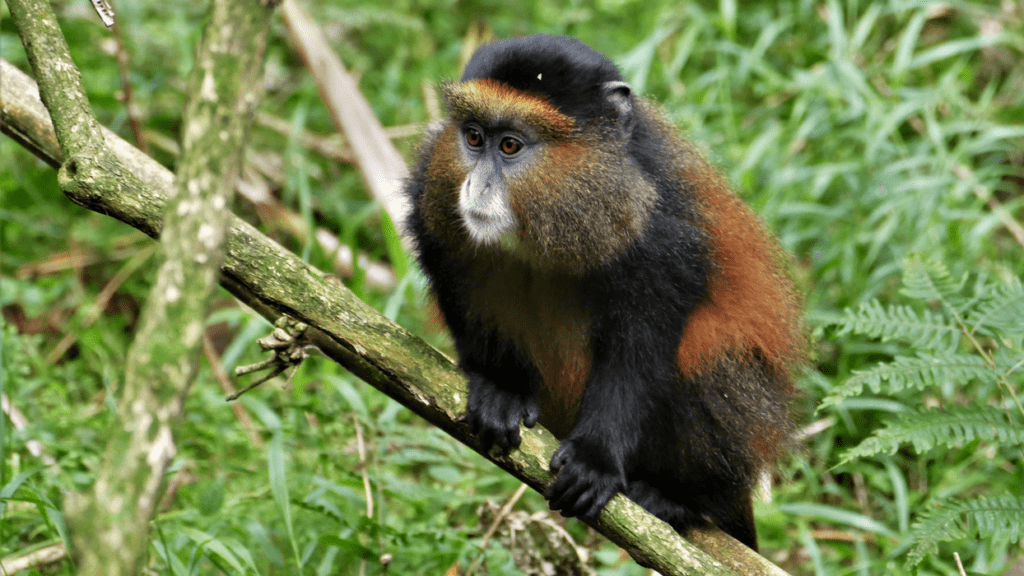
Planning a golden monkey safari requires careful consideration of the best time and locations to maximize your chances of spotting these incredible creatures. In this section, we will explore the factors that influence golden monkey sightings, including their habitat preferences, ideal seasons to visit, and recommended safari locations in Uganda.
Understanding Golden Monkeys’ Habitat
Golden monkeys are primarily found in the bamboo forests of the Virunga Mountains, which span across Uganda, Rwanda, and the Democratic Republic of Congo. These monkeys have a preference for higher altitudes, typically ranging between 2,200 to 4,300 meters (7,200 to 14,100 feet) above sea level.
The bamboo forests provide an abundant food source for golden monkeys, as they primarily feed on bamboo leaves, fruits, and shoots. The monkeys’ ability to traverse the complex terrain of the bamboo forests, along with their agile climbing skills, allow them to navigate their habitat with ease.
Ideal Seasons to Visit
To increase your chances of encountering golden monkeys during your safari, it is essential to consider the ideal seasons for sightings. The dry seasons, which generally run from June to August and December to February, are considered optimal for wildlife viewing in Uganda. During these periods, the weather is more predictable, and foliage is less dense, making it easier to spot golden monkeys amidst the bamboo forests.
However, it’s important to note that golden monkey tracking can be enjoyed year-round, and sightings are still possible during the wet seasons. The wet seasons, from March to May and September to November, offer their own unique advantages, such as lush green landscapes and fewer tourists. Keep in mind that rain showers are more frequent during these periods, so be prepared with appropriate rain gear.
Recommended Golden Monkey Tracking Locations
Uganda is blessed with several national parks and protected areas that provide excellent opportunities for golden monkey tracking. Here are some of the top recommended safari locations to consider:
- Mgahinga Gorilla National Park: Located in southwestern Uganda, Mgahinga Gorilla National Park is part of the larger Virunga Conservation Area. The park is renowned for its population of golden monkeys and offers guided treks to observe these playful primates in their natural habitat.
Volcanoes National Park (Rwanda): Just across the border from Uganda, Volcanoes National Park in Rwanda is another excellent destination for golden monkey tracking. This park is renowned for its population of golden monkeys and offers a unique opportunity to combine gorilla trekking and golden monkey tracking in one itinerary.
When planning your golden monkey safari, it’s advisable to seek the expertise of local tour operators who can assist in arranging permits, transportation, and knowledgeable guides to ensure a rewarding and responsible wildlife experience.
Now that we have covered the best time and locations to spot golden monkeys, let’s move on to the next section, where we will provide essential guidelines and tips to help you prepare for your safari adventure in Uganda.
Preparing for Your Safari: Essential Guidelines and Tips
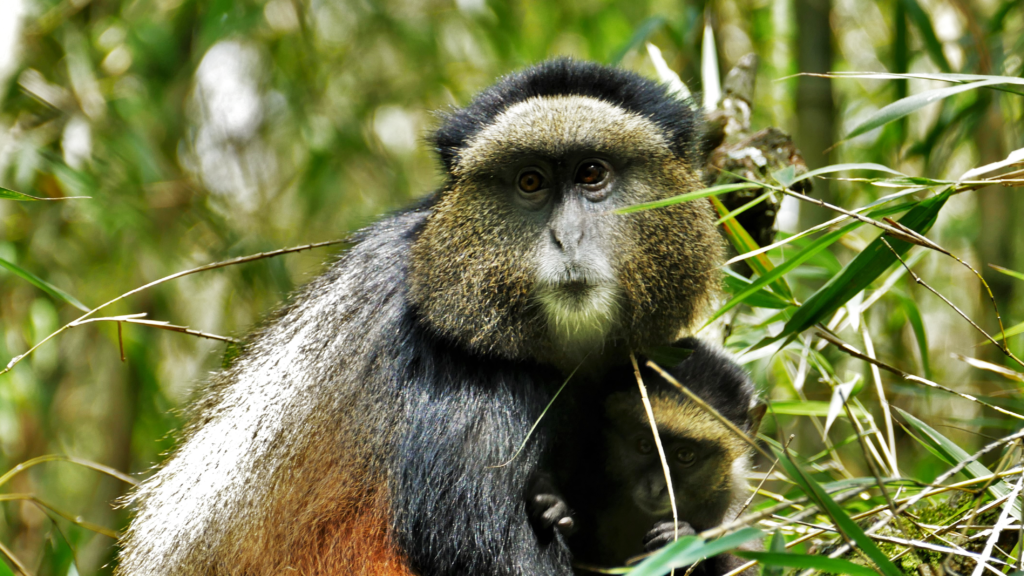
Preparing for your golden monkey safari in Uganda is crucial to ensure a smooth and enjoyable experience. In this section, we will provide you with essential guidelines and tips to help you make the necessary preparations for your adventure.
Necessary Permits and Documents
- Golden Monkey Tracking Permits: To participate in golden monkey tracking, you will need to obtain a permit. These permits are issued by the Uganda Wildlife Authority (UWA) and are essential for accessing the designated areas where golden monkeys are found. It is advisable to secure your permits well in advance, as they are limited in number and can be in high demand during peak seasons.
Visa Requirements: Depending on your nationality, you may need to obtain a visa to enter Uganda. Check with the Ugandan embassy or consulate in your country to determine the specific visa requirements and apply accordingly. Ensure that your passport is valid for at least six months beyond your intended departure date.
Travel Insurance: It is highly recommended to have comprehensive travel insurance that covers medical emergencies, trip cancellation, and any unforeseen circumstances. Confirm that your insurance policy includes coverage for wildlife activities and adventure sports.
Recommended Gear and Supplies
- Clothing: Pack comfortable and breathable clothing suitable for outdoor activities. Lightweight and moisture-wicking fabrics are ideal, along with long-sleeved shirts and pants to protect against insects and the sun. Don’t forget to include a waterproof jacket or poncho for unexpected rain showers.
- Footwear: Invest in a sturdy pair of hiking boots or trail shoes with good ankle support. These will provide traction and stability while traversing the uneven terrain of the bamboo forests. Also, pack a pair of comfortable sandals or flip-flops for relaxation at your accommodation.
- Accessories: Bring a wide-brimmed hat or cap, sunglasses, and sunscreen to protect yourself from the sun’s rays. A lightweight backpack or daypack will be useful for carrying essentials such as water, snacks, a camera, and binoculars.
- Insect Repellent: Uganda is home to various insects, including mosquitoes. Apply insect repellent containing DEET to exposed skin and consider bringing a mosquito net for added protection, especially if you are staying in accommodations without proper mosquito screening.
On the Safari: Golden Monkey Tracking Techniques
Embarking on a golden monkey safari in Uganda offers a unique opportunity to observe these fascinating creatures in their natural habitat. In this section, we will explore the techniques and practices for tracking golden monkeys, allowing you to have an immersive and rewarding wildlife experience.
Recognizing Golden Monkey Behaviors
Understanding the behavior of golden monkeys is essential for successful tracking. Here are some key behaviors to observe:
- Feeding Patterns: Golden monkeys are primarily herbivores and spend a significant amount of time foraging for bamboo leaves, shoots, and fruits. Look for signs of feeding activity, such as stripped bamboo stalks or fresh droppings, to locate the monkeys.
- Social Interactions: Golden monkeys are highly social animals and exhibit various social behaviors within their troops. Watch for interactions such as grooming, playing, or vocalizations, which can provide clues to their presence.
- Movement Patterns: Golden monkeys are agile climbers and can move swiftly through the bamboo forests. They often follow established trails or jump from tree to tree. Learning their movement patterns can help you anticipate their direction and track them effectively.
Ethical Practices while Observing Golden Monkeys
While tracking golden monkeys, it is crucial to prioritize their well-being and minimize disturbance to their natural behavior. Here are some ethical practices to follow:
Maintain Distance: Respect the recommended distance guidelines provided by your guide or park authorities. This ensures that the golden monkeys are not stressed or disturbed by human presence.
Stay Quiet and Calm: Keep noise levels to a minimum and avoid sudden movements or loud disruptions. By maintaining a calm and quiet demeanor, you create a peaceful environment for the golden monkeys to feel comfortable and exhibit their natural behaviors.
Non-Intrusive Photography: When capturing photographs of golden monkeys, use a zoom lens to maintain a safe distance. Avoid using flash photography, as it can startle and distress the monkeys. Remember, the welfare of the animals should always come before capturing the perfect shot.
Follow Park Regulations: Adhere to the rules and regulations set by the park authorities. These guidelines are in place to protect the wildlife and their habitats, ensuring a sustainable and responsible tourism experience.
By employing these techniques and practicing ethical behavior while tracking golden monkeys, you will have a memorable and respectful encounter with these enchanting creatures. In the next section, we will explore additional activities and experiences that will enhance your safari adventure in Uganda.
Enhancing Your Safari Experience
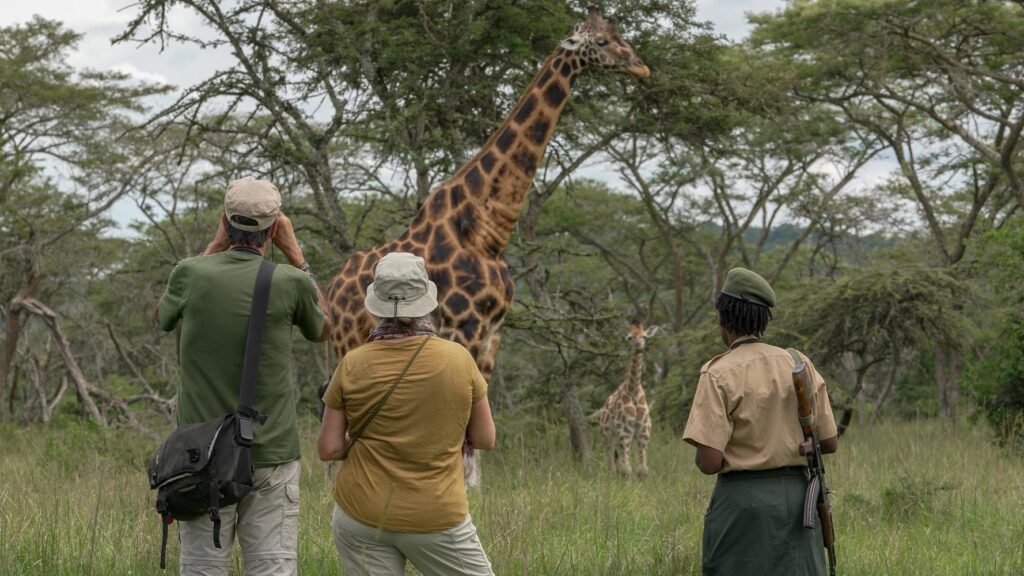
While tracking golden monkeys is undoubtedly a highlight of your safari in Uganda, there are numerous additional activities and experiences that can enhance your overall adventure. In this section, we will explore some of these options, allowing you to make the most of your time in this diverse and vibrant country.
Exploring Uganda’s Cultural Heritage
Uganda is a culturally rich nation, with a tapestry of ethnic groups and traditions. Take the opportunity to immerse yourself in the local culture by visiting traditional villages, interacting with community members, and learning about their way of life.
Engage in cultural activities such as traditional dance performances, storytelling sessions, or craft demonstrations. This cultural exchange will provide valuable insights into the history, traditions, and customs of Uganda’s diverse communities.
Spotting Other Wildlife
While golden monkeys may be the primary focus of your safari, Uganda is home to a myriad of other wildlife species. Consider adding additional game drives or nature walks to your itinerary to spot iconic animals such as elephants, lions, buffalos, leopards, and a variety of antelope species.
Uganda’s national parks, such as Queen Elizabeth National Park, Murchison Falls National Park, and Kidepo Valley National Park, offer excellent opportunities for wildlife sightings.
Ecotourism Opportunities
Uganda is a pioneer in ecotourism, emphasizing sustainable practices that benefit both the environment and local communities. Engage in ecotourism activities such as bird-watching, nature walks, or tree planting initiatives. Participate in community-based tourism projects that empower local communities and contribute to conservation efforts.
By supporting ecotourism initiatives, you can leave a positive impact on Uganda’s natural and cultural heritage.
Adventure Sports and Outdoor Activities
For thrill-seekers and outdoor enthusiasts, Uganda offers a range of adventure sports and activities. Go white-water rafting on the mighty Nile River, embark on a thrilling mountain biking expedition through scenic landscapes, or enjoy a hike to the stunning Sipi Falls.
Uganda’s diverse terrain provides ample opportunities for adrenaline-pumping adventures that will leave you with unforgettable memories.
Book With Kikooko Africa Safaris To Meet The Golden Monkeys in Uganda
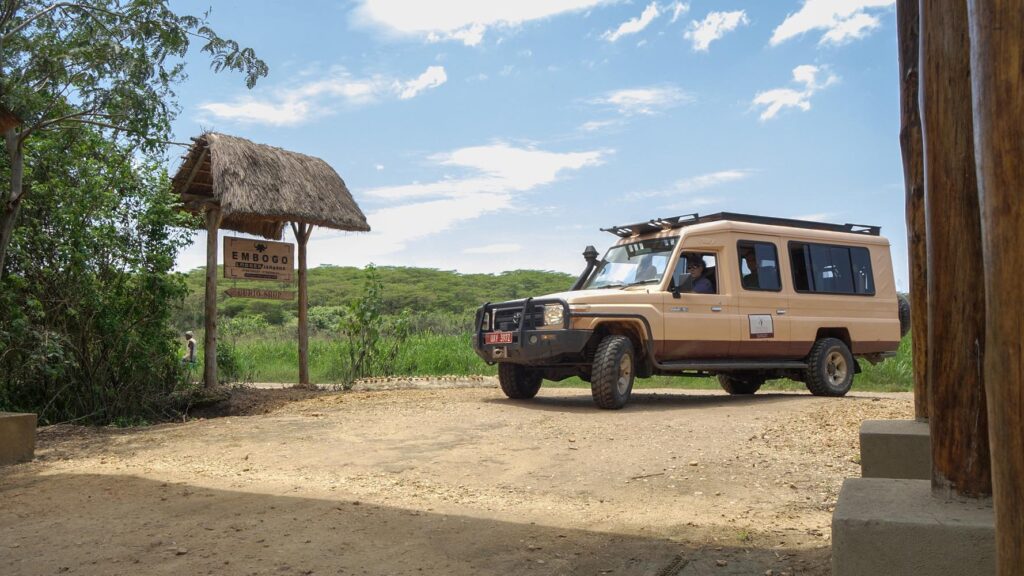
After days of safari adventures, take some time to unwind and rejuvenate. Uganda offers tranquil retreats and wellness experiences amidst its stunning natural beauty. Indulge in spa treatments, practice yoga in serene surroundings, or simply relax by the shores of Lake Victoria. Allow yourself to connect with nature, recharge your mind and body, and find inner peace amidst Uganda’s serene landscapes.
As we conclude this comprehensive guide on tracking golden monkeys on safari in Uganda, we hope that it has provided you with valuable insights and inspiration for your upcoming adventure. Get ready to witness the beauty of golden monkeys, immerse yourself in Uganda’s rich biodiversity, and create memories that will last a lifetime. Safe travels, and enjoy your extraordinary safari experience in Uganda!
Experience East Africa by booking a safari with Kikooko Africa Safaris, a locally owned and operated safari company based in Uganda.

